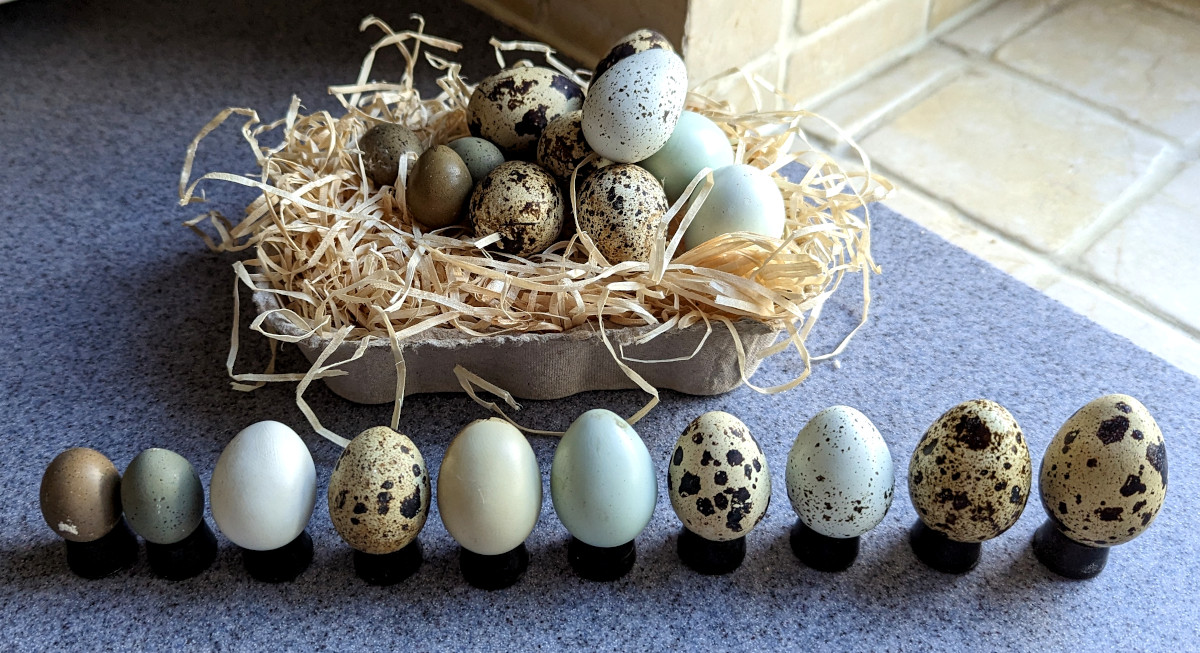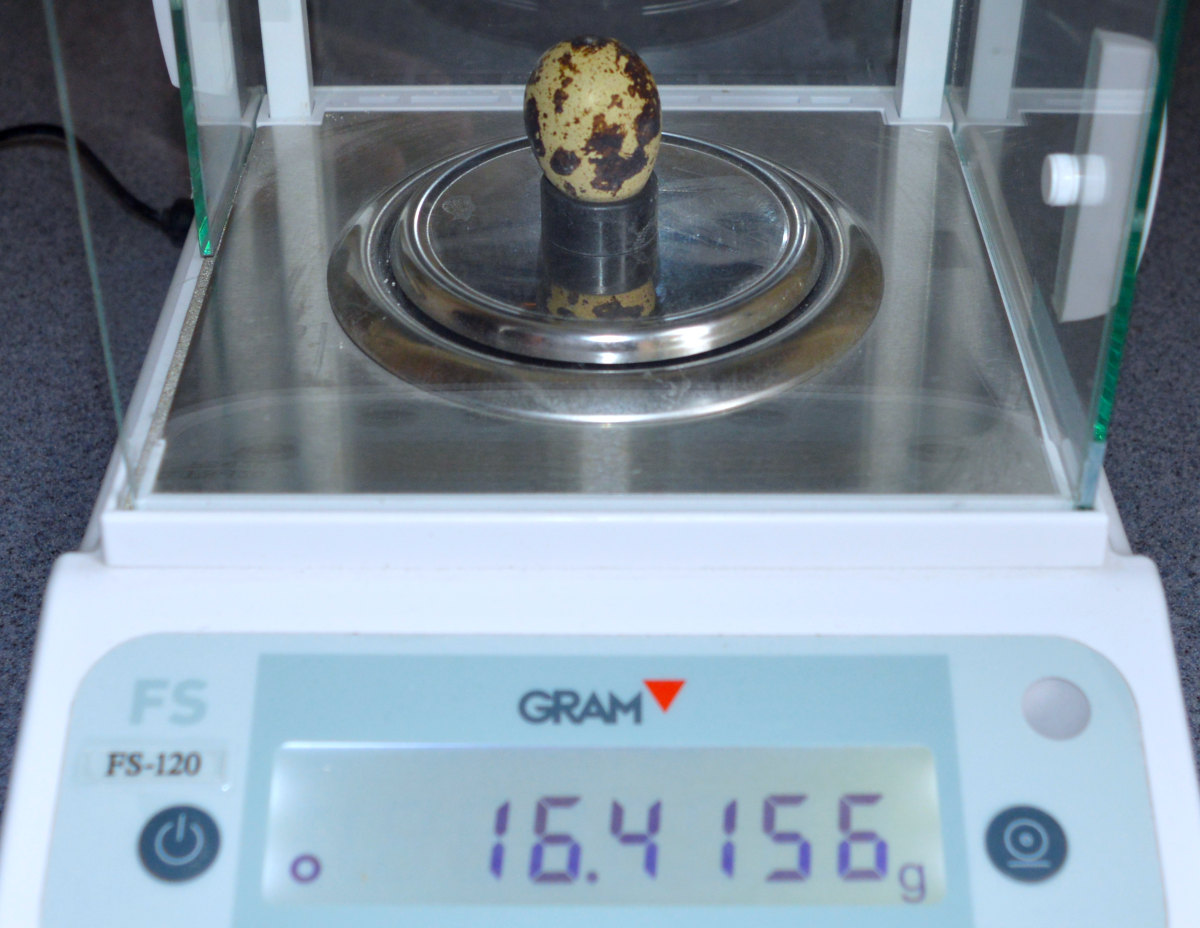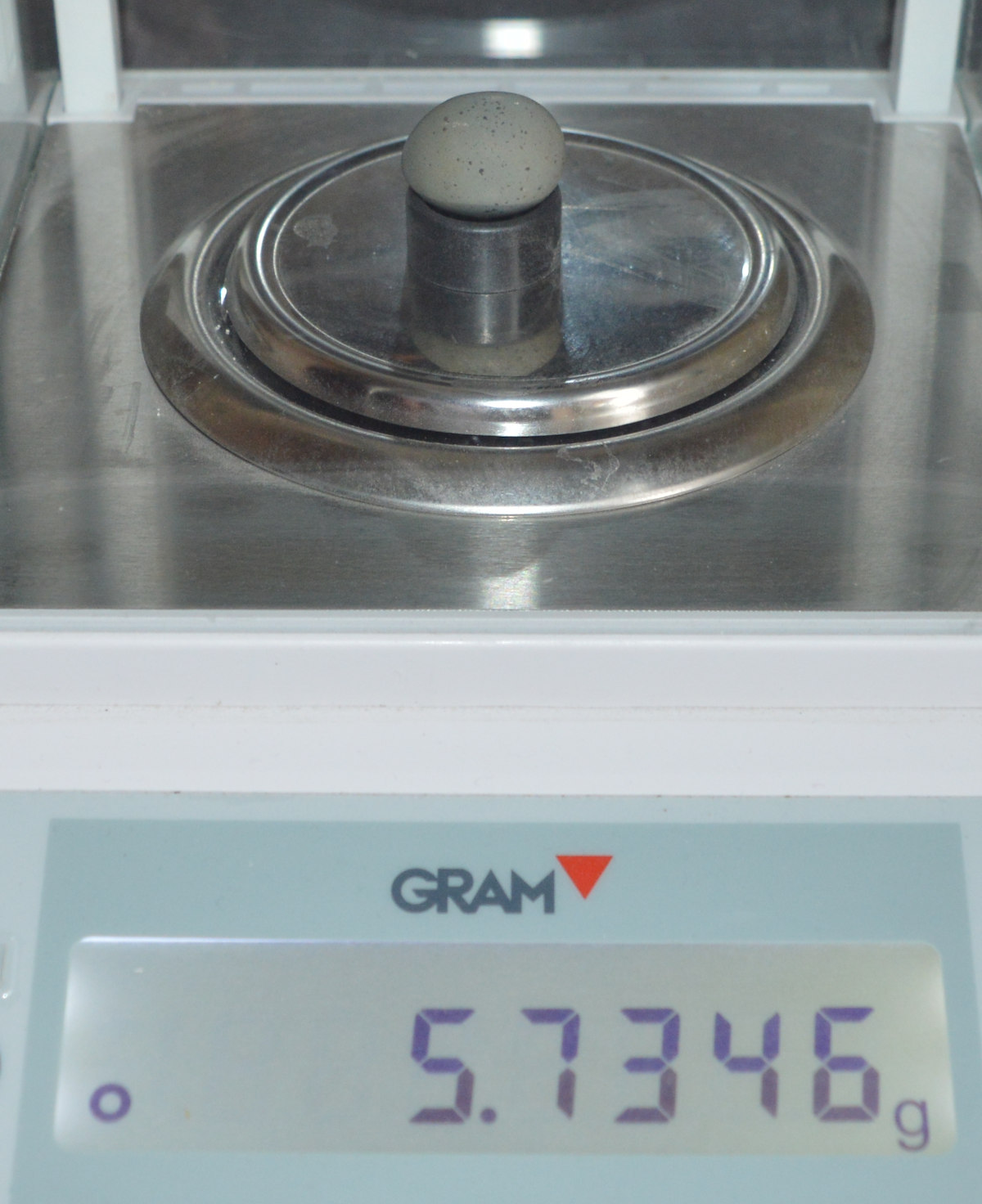How big are quails eggs, a showdown with 10 common breeds tested.

Quail eggs are the eggs of quail, a small bird that belongs to the pheasant family and are much smaller than chicken eggs.
The size of a quail egg is primarily determined by the breed of the quail. Diet, age, and genetics also play a role, but the breed is the biggest factor. For this article, we'll focus on the average sizes you can expect from a healthy hen of each breed.
A quails egg is one fifth the size of a chickens egg.
Why size matters with Quail eggs:
Quail egg size affects cooking, presentation, and even hatch rates if you breed your own.
Bigger isn’t always better—some larger eggs have thinner shells, and smaller ones often come from younger birds still “finding their rhythm.”
Testing methodology:
To ensure accuracy, I measured eggs from all 10 quail breeds I currently keep using an analytical balance, calipers and micrometer, averaging results from at least 20 eggs per breed.
Below: The largest Quail egg I collected for this test topped my scales at 16.41 grams

I supplemented with eggs from local breeders and cross-referenced with poultry data. Shell thickness, yolk-to-white ratio (higher in quail eggs), and freshness were noted to ensure consistency. My hands-on approach—plus a few cracked eggs along the way—gives these measurements real-world reliability.
The results:
I tested, weighed and measured over 300 quails eggs for this article and the smallest was 5.7 grams and measured 24 mm by 20 mm and contained just 5 ml of contents.
The largest quails egg I tested was a jumbo eggs that weighed 17.1 grams, was 38 mm long and 28 mm wide and contained 15.5 ml on contents.
Below: The smallest quail egg I tested came from a Chinese painted quail and topped the scales at just 5.73 grams.

Quails eggs are the smallest of any domesticated poultry, the average size of a quails egg is 36 mm long and 26 mm wide and the average weight is 12.5 grams.
Below: My video of the weighing and measuring of various sizes of quails eggs.
Chinese painted quails eggs were the smallest I tested, with Celedon quails eggs coming a close second and Texas A&M Quail produced the largest.
The colour of quail eggs can vary from dark brown, white, light blue to light yellow with black, blue or brown spots.
Quails eggs size and quality is dependant on various factors:
- Improper and insufficient food,
- Poor Husbandry,
- Age of the bird,
- The number of eggs it has already produced,
- Diseases of oviduct,
- Breed of a quail is the biggest influence on egg colour.
Typically, individual females lay eggs with pigmentation, characteristic for this particular species but variations can be quite marked.
Here is a table of some common Quail breeds and their typical egg size:
| Quail Breed | Egg Size and characteristics |
|---|---|
| Japanese (Coturnix) Quail |
|
| Texas A&M Quail |
|
| Golden Giant Quail |
|
| Italian Quail |
|
| Tuxedo Quail |
|
| English White Quail |
|
| Scarlet Chested (Carmine) Quail |
|
| Bobwhite Quail |
|
| Chinese Painted Quail |
|
Please note that these sizes are approximate and can vary based on factors such as the age of the bird and their diet.
Factors that affect Quail egg size:
- Age of the bird – Young hens lay smaller eggs; size increases after the first month of laying.
- Diet – High-protein diets (around 20–24% for quail) encourage consistent egg size.
- Breed genetics – Jumbo lines lay larger eggs by design.
- Season – Some hens lay smaller eggs during extreme heat or cold.
Adding artificial light to increase the day length may result in more and slightly larger eggs being produced.
Practical tips:
Use a scale if cooking by weight—especially for baking.
Don’t panic over size changes—fluctuations are normal during a hen’s first few weeks of laying.
Bigger eggs aren’t always hatchable. Double-yolkers, for example, almost never develop properly.